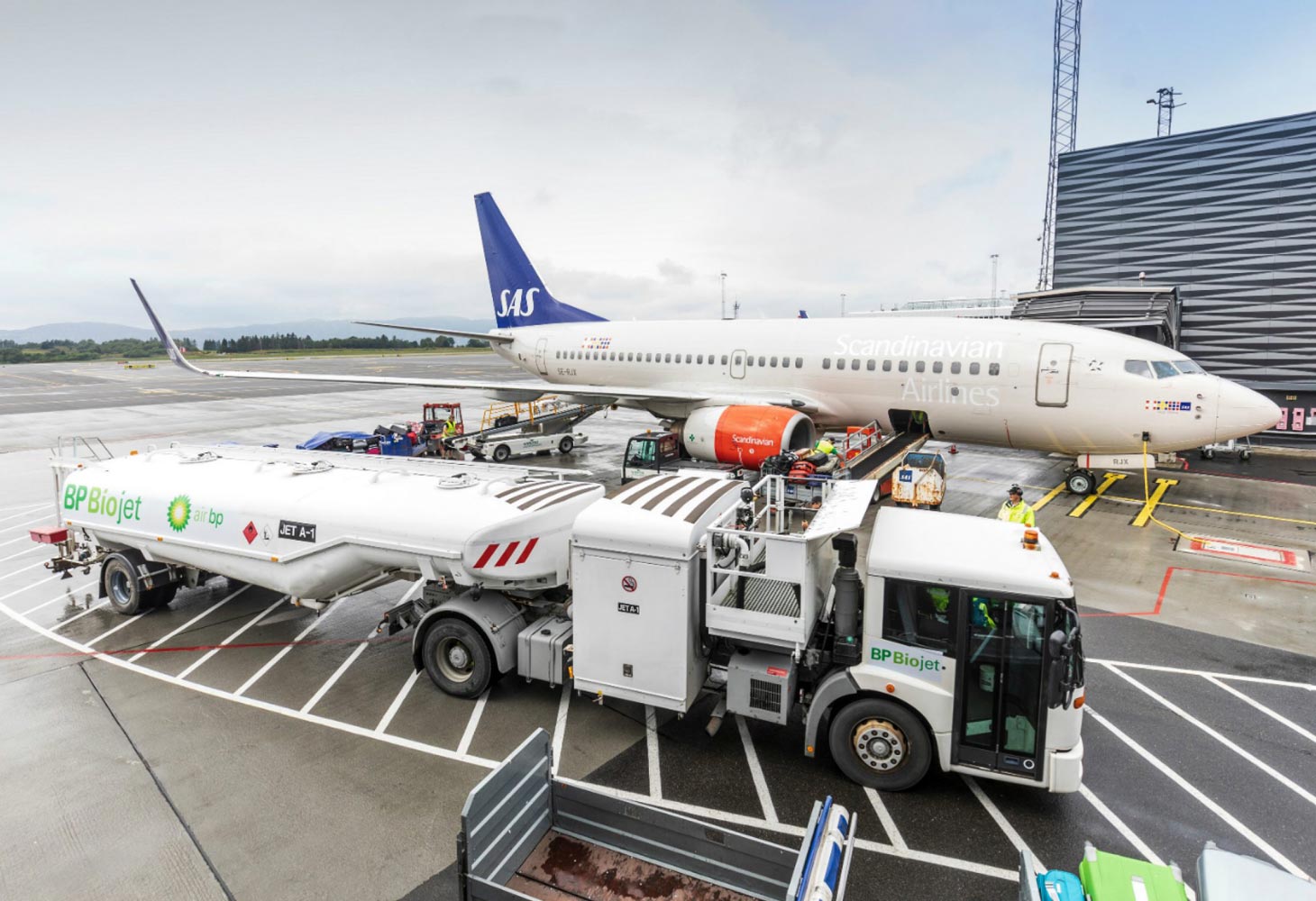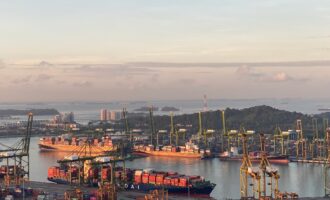
Are specifications for 100% sustainable aviation fuel on the way?
As the aviation industry looks to clean up the skies, sustainable aviation fuels (SAF) have been identified as a key component in achieving the sector’s decarbonisation goals. According to the International Air Transport Association (IATA), a trade association that represents 82% of total air traffic, more than 100 million litres of SAF will be produced in 2021. There are seven approved technical pathways for the development of alternative jet fuels.
Currently, sustainable aviation fuels can be approved at blends of up to 50%, says Mark Rumizen, senior technical specialist – aviation fuels & propulsion lubricants, at the U.S. Federal Aviation Administration (FAA). There is an increasing amount of discussion on the use and approval of a 100% SAF that does not need to be blended, he says.
Rumizen has acted as the FAA’s regulatory and technical expert on aviation fuels for more than 20 years and serves on the Executive Subcommittee of the ASTM International Aviation Fuels Subcommittee, chairing the subcommittee’s emerging fuels section. Speaking at the recently completed F+L Week Virtual conference on 11 March 2021 on the topic of “ASTM Qualification of Sustainable Aviation Fuel,” Rumizen outlined the process by which sustainable aviation fuels or alternative jet fuels are determined acceptable for use on the existing airline fleet.
Virtually all existing civilian aircraft are certified by regulatory agencies to use Jet A or Jet A1 fuel. Since the mid-2000s, ASTM has worked with the Commercial Aviation Alternative Fuel Initiative (CAAFI) to establish the qualification process for alternative jet fuels. Two ASTM standards control the entire process, says Rumizen. The technical evaluation process for alternative jet fuels is defined in ASTM D4054, after which new fuels get added to the drop-in fuel specification ASTM D7566.
ASTM D4054 describes the testing that one must undertake to determine if the SAF is identical to conventional petroleum jet fuel. The first phase of the evaluation comprises fuel property testing — an in-depth assessment of the chemical and physical properties of the candidate fuel produced by a proposed conversion process. A preliminary report is compiled by the company championing the conversion process or pathway, followed by a series of preliminary reviews conducted by aircraft engine manufacturers. Rumizen emphasised the importance of backward compatibility in the approval process. We need to ensure the new fuel is suitable for all existing engines that were designed and optimised for petroleum-derived Jet A fuel, he says.
After an initial phase one review, more extensive testing on aircraft and engine component rigs such as combustor or fuel nozzle rigs, and engine testing, may be required, he says. The compilation of a phase two ASTM research report is followed by a final review by OEMs and the FAA.
Once complete, the research report and a proposed new annex to D7566 are balloted by the ASTM subcommittee for aviation fuels. At this point, stakeholders from the wider aviation fuel community can review the data and scrutinise the conversion process. Compatibility with aircraft ground filtration systems and ground handling systems is important, and this can raise many questions, says the FAA representative.
If a candidate fuel successfully navigates this process and is passed in the ASTM ballot, the new fuel is added to ASTM D7566 as an annex. D7566 annexes have two major elements — a qualitative description of the conversion process a fuel developer or producer might follow to get fuel approved and the property tables. After issuance of the new annex, each batch of SAF must first be tested to the annex properties, and then tested again after the fuel is blended with conventional jet fuel to guarantee equivalence with conventional jet fuel, to ensure it can be used in any aircraft or engine.
If this process seems difficult, it is. Tighter control of the fuel properties in alternative jet fuels is deliberate because we do not have a lot of experience with these new fuels, says Rumizen.
The ASTM D7566 fuel specification was released in June 2009, with the Fischer-Tropsch Synthetic Paraffinic Kerosene (FTSPK) pathway approved as the first annex. In May 2020, the seventh and most recent annex was issued. Rumizen highlighted several recent process improvements to F+L Week Virtual delegates.
ASTM’s D4054 Clearing House provides a “onestop shopping” facility where fuel producers can drop their fuel off and receive a research report suitable for ASTM balloting. FAA funds the University of Dayton Research Institute to operate the D4054 Clearing House. Fifty to 100 gallons of fuel is initially required to start the process, but greater amounts may be required if rig or engine testing is determined to be necessary.

The ASTM D4054 Fast Track Annex is a streamlined testing programme suitable for a nominal jet fuel that is in the middle of the range of the jet fuel properties. The process is based on compositional and screening data and allows testing to be completed more swiftly. However, candidate fuels utilising the fast-track process are only permitted at a 10% blend concentration, says Rumizen. Annex A7, which establishes criteria to produce synthesized paraffinic kerosene from hydrocarbon-hydroprocessed esters and fatty acids (HC-HEFA-SPK), went through the fasttrack annex.
SAF approvals can require hundreds to thousands of gallons of fuel. Pre-screening at the University of Dayton enables analytical testing that requires only small fuel volumes, allowing a candidate producer to optimise and refine their process at the laboratory scale.
An ASTM Taskforce has been established to determine how to incorporate a specification for 100% sustainable aviation fuels that does not need to be blended. Rumizen outlined one possible method of adding an annex for an unblended SAF and defining in the main body of the specification that the annex does not require blending. Part 3 criteria for 100% SAF would be added to table 1 — where requirements for the jet fuel properties are defined — and qualitative criteria would be included in the annex. If we were to do this, the approach would not require property tables in the annex, says Rumizen. However, this is only an idea at this point, he suggests.
Most annexes in ASTM D7566 were approved at a maximum 50% blend as they are not fully formulated jet fuels, they are lacking aromatic molecules that are typically in jet fuel and range from 8% to 20%, Rumizen says. In absence of aromatics, blending with a fully formulated fuel is necessary.
Annex A6, a synthetic kerosene process that establishes criteria for the production and use of catalytic hydrothermolysis jet fuel (CHJ) is a fully formulated fuel. The process uses catalytic hydrothermolysis to convert any renewable fat, oil, and grease feedstock into high yields of drop-in hydrocarbon fuels. Applied Research Associates’ (ARA) candidate fuel was approved on 15 December 2019. At this stage, CHJ was approved only at 50% blend because we want to be conservative and slowly introduce these into the fleet for safety reasons, says Rumizen. The fuel does not have any property limitations so that percentage could be increased to 100%, he adds.








